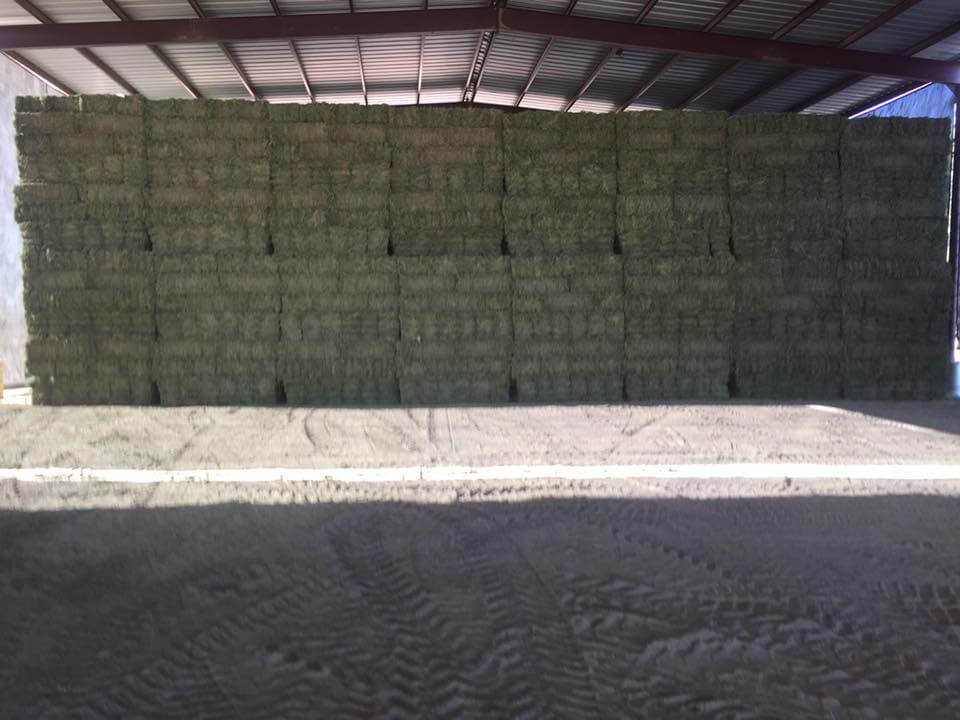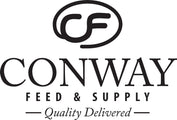We have the lowest delivery fees

How Much Does a Bale of Hay Cost?
Hay is one of the most common feed for horses. It provides high nutritive content, is widely available, and horses enjoy it. Grass or legumes are cut and dried, resulting in the delicious and versatile feed. Most of the time, horse owners buy tons of hay and store it over months or even years to provide good nutrition to horses all year round. And even if you prefer to purchase hay every month, you still need to buy large amounts at once for your horses. But how much does a bale of hay cost? Let’s look at some current hay price numbers.

Cost of a Bale of Hay
As a horse owner, you are responsible for keeping your animals at their optimal health. That is where hay comes to play. It is widely available in the United States and is a good choice of feed throughout the year. Depending on the type, quality, place of harvest, and size of hay bales, you should expect to pay something between $30 and $300 per ton of hay. If you want hay to contain alfalfa or Bermuda grass, then it will be more expensive. On average, you can expect to pay between $10 and $18 for alfalfa and between $14 and $20 for Bermuda grass hay in Arizona. At Conway Feed, alfalfa hay is available for $10-13.50 and Bermuda grass hay for $15.
From the hay market, square bales, on average, will cost you between $3 and $10 per bale, but some farmers prefer selling their hay per pound, in which case such a bale will be around 50 pounds. This might actually work better for you since you should estimate your horses’ feed needs by pounds and not by large round bales. However, the majority of farmers will sell their hay by the ton.
Besides the type of hay affecting the price, the grade of the crop is also an important factor, with the first variety being the most expensive among other varieties of the same plant. If you want to know the prices for each type of hay and variety, you can visit a website of any company in the area and get a rough estimate. However, if you do this, keep in mind that this is just an estimate and the actual price might differ. Prices of hay fluctuate all the time. In fact, you may notice that even within a single year, the prices might change.

How to Estimate Your Expenses
If you want to estimate your spending, you need to know on average how much your horses eat during the day. Typically, adult horses consume around 25 pounds in a day. If you are ordering hay for a full year, this means that you should get about 4 ½ tons of it per horse. Since usually you would buy hay by bales and not by pounds, you will need to find out first how much a bale weighs. You should always know the weight of bales because it varies across dimensions, density, and type of hay in a bale.
Let’s say you want to order a ton of alfalfa hay in bales, each of which weighs 120 pounds and costs $15 per pound. Here is how to find out your expenses:
A ton / bale weight x bale price = 2,000 lbs. / 120 lbs. x $15 = about $250 for a ton of hay.
Now, if you want to store enough alfalfa for one horse to eat the whole year, you will pay:
4,5 tons x $250 = $1,125 per horse per year of alfalfa hay supply
Knowing how to calculate your expenses, you can now estimate your total for buying any type of hay.

Factors That Impact Cost of Hay
What are some of the factors that can play a role in how much a bale of hay costs? In states with drought seasons like Arizona or California, weather can impact the costs. Apart from that, for imported types of hay, demand in their countries of origin can also result in limited supply and higher costs. Delivery costs vary as well, and some farmers may choose to grow less hay in favor of other crops, thus decreasing availability. Here are all the factors in more detail:
- Location. If you are buying hay from a rural producer, you can expect costs to be much cheaper compared to a large company. Some farmers might have bales of hay that they already kept for a while and might give them away if nobody buys them.
- Time of the year. During the fall and winter, hay is not in high demand, so there will also be fewer options. Buying right before the start of the season is best.
- Quality of hay. Bales of hay have different contents. Some of them can have only grass hay or only legume hay, but there are also mixed varieties. That is why the price of hay will change depending on whether it is single-type or mixed. Typically, mixes with alfalfa will be pricier.
- Discounts. Many farmers will give you discounts for purchasing large amounts of hay. Typically, the more you buy, the more you will save. Apart from that, if you purchase hay from the same company monthly or yearly, you are also likely to receive a “frequent buyer” discount.
Choosing Hay for Horses
How to choose the best, high-quality hay for your horses? Of course, you want to get the most out of your money. Keep in mind when you are choosing hay to check its maturity, nutritional content, softness, and smell. If hay smells sweet, then it will be more palatable, and your horses will eat and enjoy it more. They also like softer types of hay more than those with a lot of stems. To match their dietary needs, you might need both legume and grass hay, then mix them in bags for feed. For overweight horses, hay cut in late maturity is better than less mature cuts.


Leave a comment